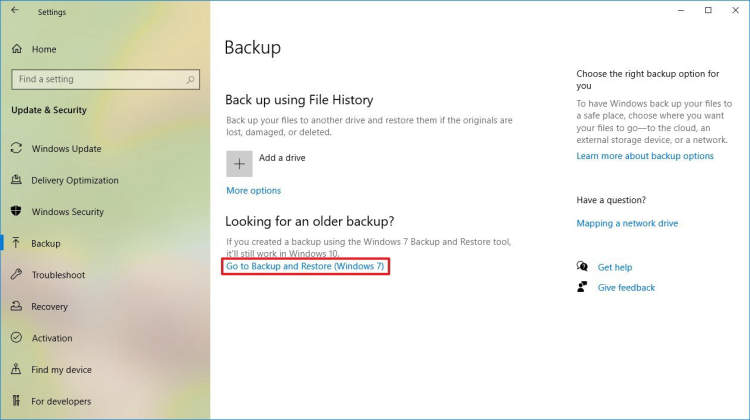In today’s digital age, where our laptops hold a significant amount of our personal and professional data, it has become crucial to have a backup and restore system in place. Whether it’s protecting our important files from hard drive failures or recovering our laptops after a software glitch, knowing how to configure and use laptop backup and restore options is essential.
In this article, we will explore the step-by-step process of setting up and utilizing laptop backup and restore features. From choosing the right backup software to understanding different restore options, we’ll provide you with all the necessary information to safeguard your data and recover your laptop swiftly in case of any unforeseen events.
Understanding the importance of laptop backup and restore options
In today’s digital age, where laptops have become an integral part of our lives, it is crucial to understand the importance of having reliable backup and restore options. Whether you use your laptop for work, study, or personal use, the loss of important data can be catastrophic.
Why is laptop backup essential?
1. Protecting against hardware failure: Laptops can suffer from hardware failures at any time, resulting in data loss. By regularly backing up your laptop, you can ensure that your files are safe and can be easily restored.
2. Guarding against accidental deletion: Accidentally deleting important files can happen to anyone. With a proper backup system in place, you can quickly retrieve the deleted files without any hassle.
3. Dealing with malware and ransomware attacks: Malware and ransomware threats are constantly evolving, posing a significant risk to your laptop’s data. Having a backup allows you to restore your files to a previous clean state, minimizing the impact of such attacks.
Understanding laptop restore options
1. System restore: Many laptops come with a built-in system restore feature that allows you to revert your laptop’s settings to a previous state. This can be helpful when dealing with software-related issues or conflicts.
2. External backups: Storing your laptop backups on external storage devices or cloud-based services provides an additional layer of security. In case of a complete system failure, these backups can be used to restore your laptop to a fully functional state.
3. Creating disk images: Creating disk images of your laptop’s entire hard drive can be a convenient way to restore your system, applications, and files to a previous state in case of a major system failure. These images capture the exact state of your laptop, ensuring a seamless restoration process.
Conclusion
Investing time and effort in setting up reliable laptop backup and restore options is crucial for safeguarding your valuable data. By regularly backing up your files and understanding the various restore options available, you can minimize the potential losses caused by hardware failures, accidental deletions, and malicious attacks. Don’t wait until it’s too late!
Configuring laptop backup settings

Backing up your laptop’s data is crucial to prevent any potential loss of important files and information. By configuring the backup settings, you can ensure that your data is secure and easily recoverable in case of any data loss incidents. Here’s a step-by-step guide on how to configure and use laptop backup and restore options.
1. Choose a backup software
There are many reliable backup software options available in the market. Research and select a suitable backup software that aligns with your needs and preferences.
2. Determine the backup frequency
Decide how often you want your laptop to perform backups. It is recommended to set a frequent backup schedule to minimize the risk of data loss. Daily or weekly backups are commonly chosen options.
3. Select backup locations
Choose the destination where you want your backup files to be stored. You can either use an external hard drive, cloud storage services, or network-attached storage (NAS) devices.
4. Define backup content
Determine which files and folders you want to include in the backup. It is advisable to include important documents, photos, videos, and other personal files.
5. Set backup encryption
To enhance the security of your backed-up data, consider enabling encryption. This ensures that even if someone gains unauthorized access to the backup file, they won’t be able to read its contents.
6. Test your backups
Periodically test your backups to ensure they are functioning correctly. This will help you identify any issues or errors early on and take necessary actions to resolve them.
7. Automate the backup process
To save time and effort, set up automatic backups. This way, your laptop will perform backups at the scheduled time without requiring manual intervention.
By following these steps, you can easily configure and use laptop backup and restore options. Regularly backing up your data provides peace of mind and ensures that your valuable files are protected.
Using Laptop Restore Options
In this article, we will explore how to configure and utilize the backup and restore options available on your laptop. These features are essential for safeguarding your data and recovering your system in case of any issues or unexpected events. By familiarizing yourself with the restore options, you can ensure that your laptop remains secure and your files are protected.
Why Backup and Restore is Important
Before diving into the details, let’s understand why it is crucial to have a backup and restore system in place:
- Data Protection: Backing up your files and system allows you to protect your valuable documents, photos, and other important information from accidental deletion, hardware failure, or malware attacks.
- System Recovery: In case your laptop experiences issues or crashes, having a recent backup ensures that you can easily restore your system to a previous stable state without losing any data.
- Peace of Mind: Knowing that you have a backup and restore system gives you peace of mind, allowing you to work or use your laptop without worrying about potential data loss.
Configuring Backup Settings
Before utilizing the restore options, you’ll need to configure the backup settings on your laptop. Follow these steps:
- Open the Control Panel on your laptop.
- Navigate to the “Backup and Restore” or “File History” option.
- Select the drive or external storage location where you want to store your backups.
- Choose the files and folders you want to include in your backups.
- Set the backup schedule and frequency that suits your needs – whether it is daily, weekly, or monthly backups.
- Save your settings and let the backup process begin.
Using Restore Options
Once you have configured the backup settings, it’s time to understand how to use the restore options effectively. Follow these steps:
- Open the Control Panel on your laptop.
- Navigate to the “Backup and Restore” or “File History” option.
- Click on the “Restore Files” or “Restore Personal Files” option.
- Select the backup version you want to restore from.
- Choose the specific files or folders you want to restore or opt for a full system restore.
- Follow the on-screen instructions to complete the restore process.
Conclusion
Having a reliable backup and restore system for your laptop is essential for data protection and system recovery. By configuring the backup settings and familiarizing yourself with the restore options, you can easily safeguard your files and restore your system to a stable state whenever needed. Invest the time in setting up these features, and you’ll have peace of mind knowing that your laptop is well-protected.
Conclusion
Configuring and using laptop backup and restore options is crucial for ensuring the safety and security of your valuable data. By utilizing the built-in backup and restore features of your laptop, you can easily create and restore backups, protecting yourself from potential data loss due to system crashes, hardware failures, or accidental deletions.
Furthermore, having a reliable backup solution in place provides peace of mind, knowing that even in the event of a catastrophic failure, your important files and documents are safe. Regularly creating backups and keeping them in a separate storage device or cloud storage service guarantees that you can easily recover your data and resume your work without any significant disruptions.

